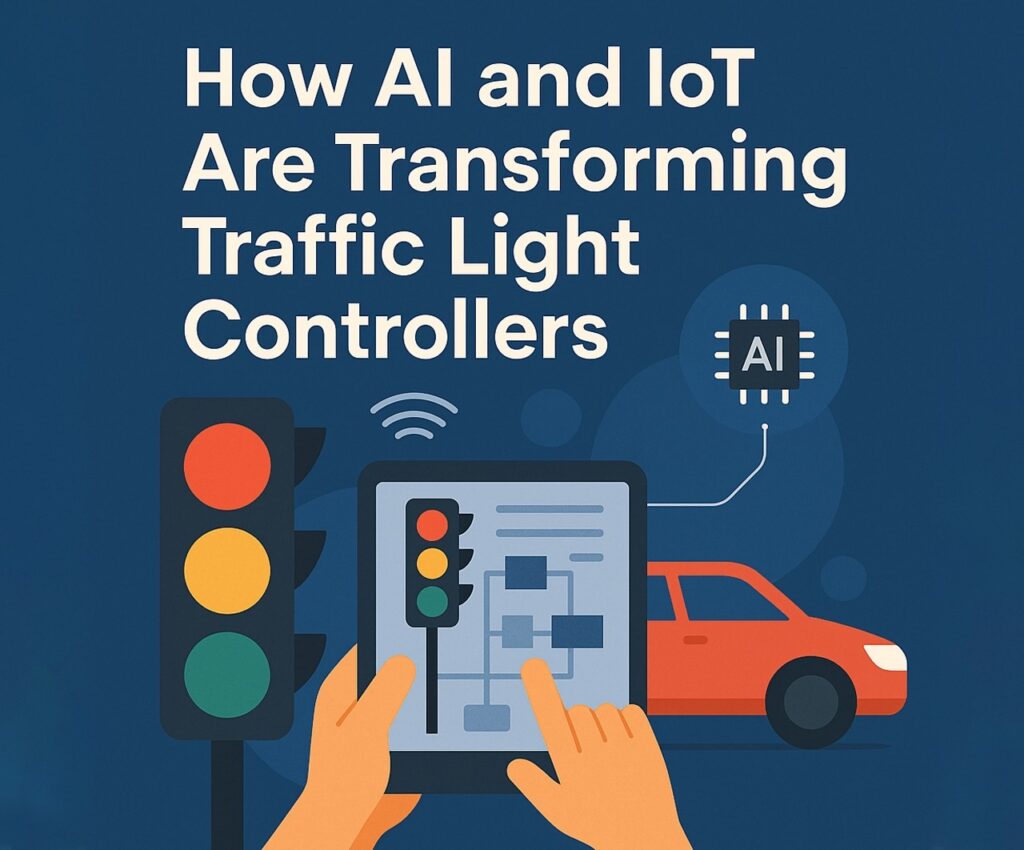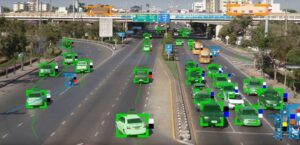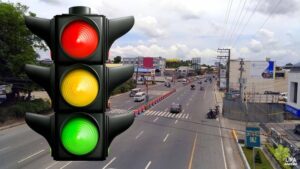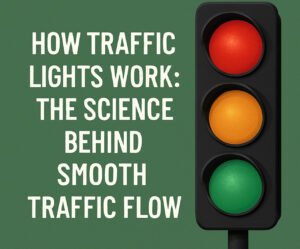In a world racing toward smart cities and connected infrastructure, the traffic light signal controller, smart traffic light controllers, and wireless traffic light controller are no longer simple mechanisms that alternate red, yellow, and green. They are evolving into intelligent systems driven by Artificial Intelligence (AI) and the Internet of Things (IoT), creating traffic networks that are more responsive, efficient, and safer. As congestion continues to grow in urban environments, these innovations are revolutionizing how cities manage and optimize the flow of vehicles and pedestrians. Know more..
The Evolution of Traffic Light Controllers
For decades, traditional traffic light signal controllers have operated on fixed timing schedules or basic vehicle detection loops. While these systems served their purpose, they lacked adaptability. Traffic conditions fluctuate constantly—rush hour, emergencies, events, and even weather conditions all demand real-time responsiveness, something that static systems can’t provide effectively.
Enter AI and IoT. These technologies bring the intelligence and flexibility that cities have long needed. Instead of relying on outdated, rigid programming, today’s smart traffic light controllers can analyze live traffic data, adjust light cycles in real-time, and even communicate with other infrastructure components and vehicles to streamline flow.
Key Components of AI-Driven Traffic Light Systems
At the heart of this transformation is a network of sensors, cameras, and connected devices collecting and transmitting data. AI algorithms process this data to make predictive and adaptive decisions. For example, a wireless traffic light controller might receive input from road-embedded sensors and overhead cameras, then determine that one lane is overly congested and adjust timing to allow for longer green lights.
AI also enables predictive analytics, allowing cities to forecast traffic patterns and preemptively adjust light signals. This reduces stop-and-go driving, which cuts down on fuel use and emissions, and minimizes frustration among drivers.
The Role of IoT in Connectivity and Data Sharing
IoT is the connective tissue linking traffic light signal controllers to a broader smart city ecosystem. Each smart traffic light controller functions as a node in an interconnected network. When data is shared across this network, it enables citywide optimization. For instance, if an accident occurs in one part of town, the system can reroute traffic and adjust signals miles away to accommodate the change.
Furthermore, the wireless traffic light controller removes the need for extensive cabling infrastructure, making installations and upgrades significantly more cost-effective and flexible. This wireless capability is especially advantageous in expanding cities and developing areas where infrastructure may not yet be fully built out.
Benefits of AI and IoT in Traffic Light Management
1. Reduced Congestion: Real-time data and adaptive signaling reduce traffic buildup at intersections.
2. Lower Emissions: By minimizing idling and stop-and-go driving, these systems help lower vehicle emissions.
3. Improved Safety: AI can detect pedestrian movement, speeding vehicles, or red-light violators and adjust signals or alert authorities accordingly.
4. Better Emergency Response: Smart traffic light controllers can prioritize routes for ambulances, fire trucks, and police vehicles, reducing their response times.
5. Enhanced User Experience: Smooth, predictable traffic flow makes commuting less stressful and more time-efficient.
Case Studies: Cities Leading the Charge
Cities like Los Angeles, Singapore, and Amsterdam have already begun deploying smart traffic light controllers with significant success. Los Angeles integrated AI into its traffic control network, reportedly cutting down travel times by 12%. Singapore uses adaptive traffic light systems that reduce waiting time by dynamically responding to real-time traffic volume.
These examples show how wireless traffic light controllers and AI-driven decision-making aren’t just theoretical—they’re already improving lives.
The Future: Integration with Autonomous Vehicles
One of the most exciting developments on the horizon is how AI-powered traffic light signal controllers will interact with autonomous vehicles. Smart signals can communicate with self-driving cars, guiding them through intersections more efficiently than any human driver could.
For example, a smart traffic light controller might delay a red light if it senses an autonomous vehicle approaching at a safe speed, helping maintain momentum and reduce unnecessary stops. This level of coordination has the potential to dramatically increase the safety and efficiency of urban traffic systems.
Overcoming Challenges in Implementation
Despite the benefits, deploying wireless traffic light controllers and AI systems comes with challenges:
- Cost: Initial setup can be expensive, though long-term savings and efficiency gains often offset these costs.
- Integration: Existing infrastructure may need upgrades to support new technology.
- Data Privacy: Managing data securely is crucial, especially with real-time surveillance and tracking.
- Standardization: There needs to be a unified approach across cities and countries to ensure systems can communicate effectively.
Sustainability and Green Urban Planning
Another significant advantage of using smart traffic light controllers is the contribution to sustainability. By optimizing traffic flow and reducing idle times, cities can cut down significantly on emissions. When combined with green transportation initiatives like bike lanes and electric vehicle incentives, these systems support broader environmental goals.
Moreover, wireless traffic light controllers often consume less power and can be integrated with solar energy solutions, making them even more eco-friendly. Smart cities are not just about technology—they’re about building livable, sustainable environments.
Customization and Scalability
Modern traffic light signal controllers offer customization features to suit the unique needs of each intersection. For instance, a busy downtown intersection with high foot traffic may need different programming than a suburban crossroads.
These controllers are also highly scalable. Cities can start with pilot programs in congested areas and gradually expand based on results. Because many wireless traffic light controllers are modular, adding new features or integrating with additional systems is relatively simple.
Conclusion: A Smarter, Safer Future
The integration of AI and IoT into traffic light signal controllers, smart traffic light controllers, and wireless traffic light controllers is revolutionizing urban mobility. These technologies offer real-time responsiveness, data-driven decision-making, and a foundation for integrating future transportation solutions like autonomous vehicles.
For municipalities aiming to improve traffic management, enhance public safety, and promote sustainability, investing in these smart systems is no longer a luxury—it’s a necessity. As technology continues to advance, the smart traffic network will be the backbone of every forward-thinking city.






 العربية
العربية Azərbaycan dili
Azərbaycan dili Български
Български Čeština
Čeština Nederlands
Nederlands English
English Français
Français Deutsch
Deutsch עִבְרִית
עִבְרִית Bahasa Indonesia
Bahasa Indonesia Italiano
Italiano 日本語
日本語 ဗမာစာ
ဗမာစာ नेपाली
नेपाली Português
Português Русский
Русский Español
Español Svenska
Svenska ไทย
ไทย Türkçe
Türkçe Українська
Українська